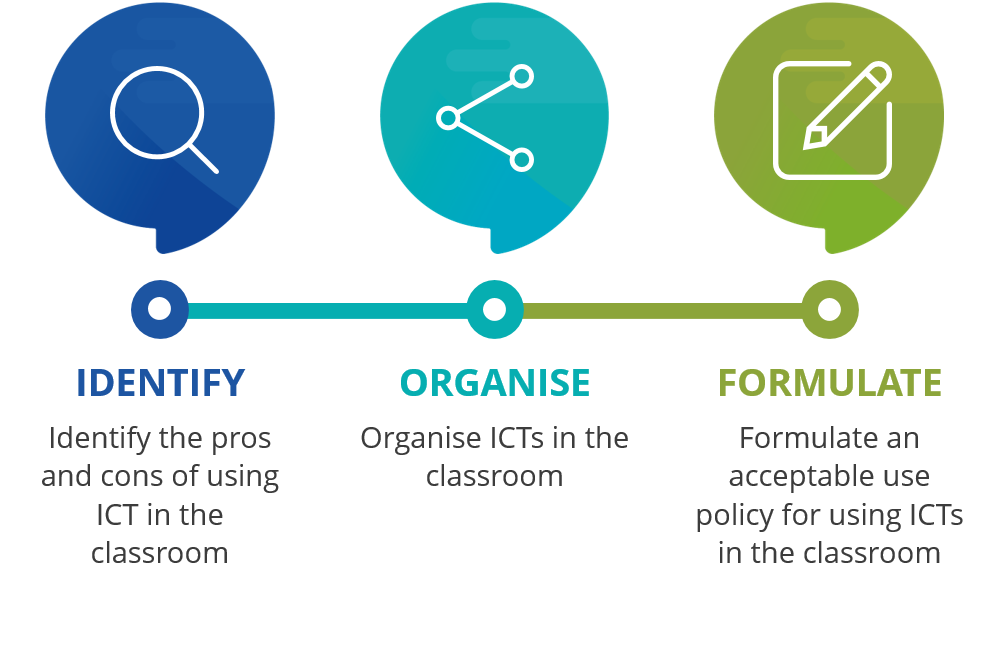Unit 40: Organising ICT in the classroom


As teachers, we are able to use a variety of ICT tools in our classrooms. Many of us have access to computers, whiteboards, tv, tablets and cellphones. These digital resources can all be used for teaching and learning. But, how do we protect expensive technology but also serve the syllabus requirements in the best way possible? How do we organise digital resources in the classroom so we get the most to support and reinforce learning activities and social interactions?
This unit will look at these issues and policies around them.
By the end of this unit you should be able to do the following:


What is the ideal set up for ICTs your classroom? It depends on the requirements of the syllabus, availability of ICT, and also safety and security.

Write a policy brief for your school’s senior management that models for them what such as a set up/design should be.
In MS Word, write a two-page (12 point font size) ICT in school policy and implementation plan that will guide teachers in your on how best to manage ICTs at school. It should contain:
Click on the link below to upload your policy document
Attribution
References
![]()
Teachers' ICT Integration Course by Matthew Goniwe School of Leadership and Governance is licensed under a Creative Commons Attribution-ShareAlike 4.0 International License with the exception of the following resources:
All content not licensed under a Creative Commons license is all rights reserved, and you must request permission from the copyright owner to use this material.